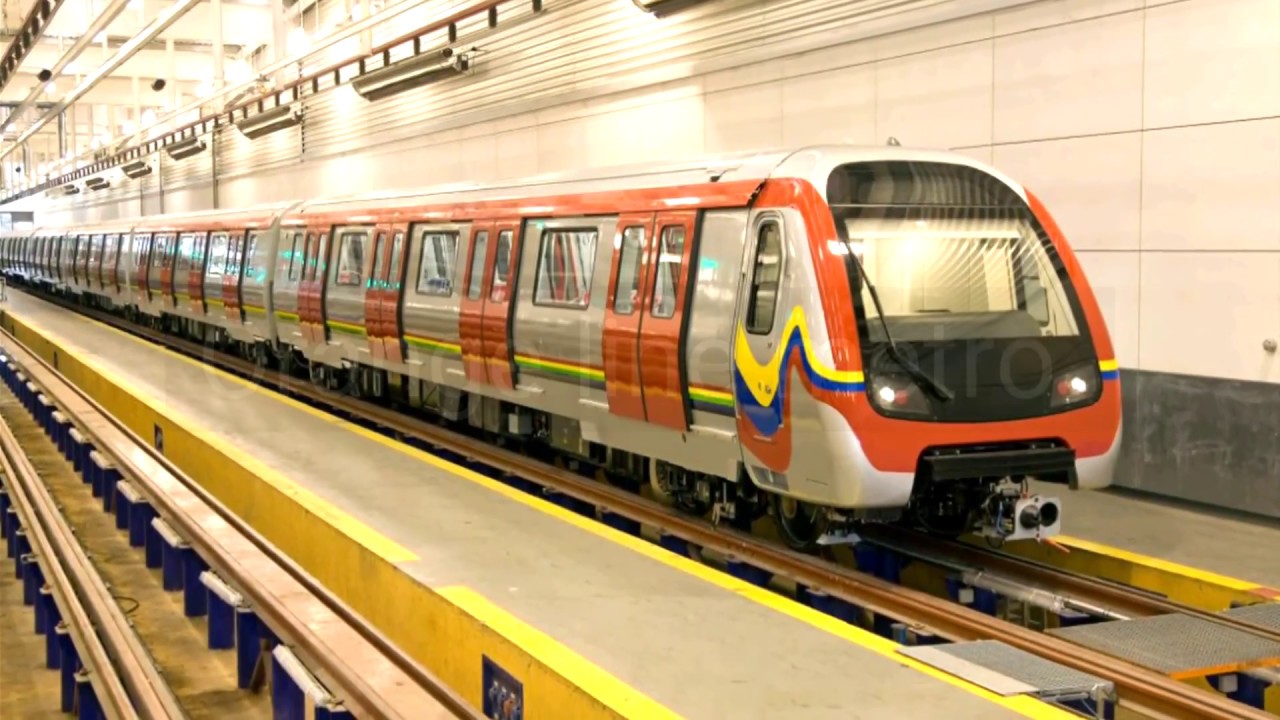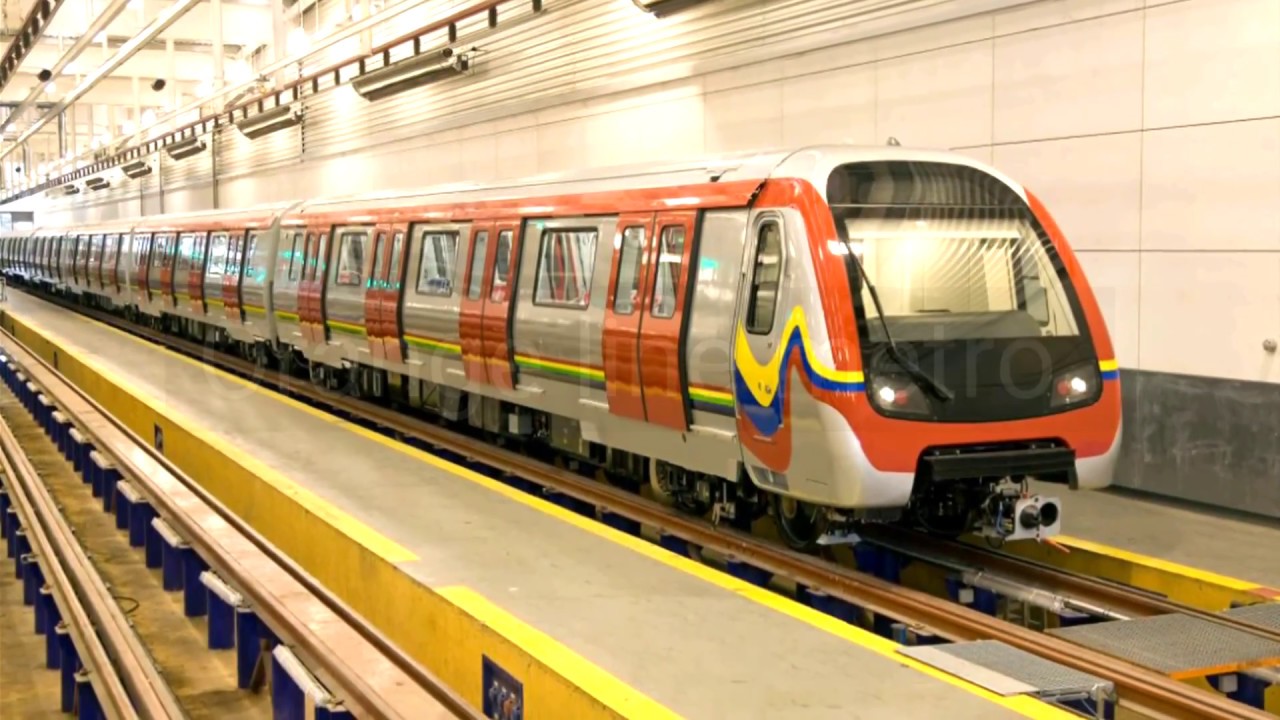We mentioned about two beautiful cities of Pakistan Islamabad and Karachi previously and today we will talk about a very amazing project i.e Orange Line Metro Train in Lahore. Orange Line is an automated rapid transit system a work in progress in Lahore, Punjab, Pakistan. When operational in March 2018, the Orange line will transform into Pakistan’s first metro rail line.
The Orange line is the first of the three proposed rail lines proposed for the Lahore Metro. The line will navigate 27.1 km (16.8 mi) with 25.4 km (15.8 mi) lifted and 1.72 km (1.1 mi) underground. The line will be served by 26 stations and is depended upon to manage 250,000 voyagers step by step. Regardless of the way that it is as regularly as conceivable indicated as a bit of the wider China Pakistan Economic Corridor, the Orange line is being financed by the Government of Punjab.
3D View of Orange Line Metro Train Lahore
Stations
The wander will have 26 stations. Anarkali and Central stations will be underground, while whatever remains of the 24 will be elevated. The rail line will experience the point of convergence of each station, with stages flanking the track. Elevated stations will have a width of 22.5 meters, while Anarkali Station will be 16 meters wide, and Central Station 49.5 meters wide. Elevated stations will all be 102 meters long, while Anarkali and Central Stations will be 121.5 and 161.6 meters long, individually.
Rolling stock
Orange Line trains will be made out of five wagons created by China’s Norinco and will be automated and driverless.A standard Chinese “Sort B” train-set containing 5 cars with 4 gateways each will be used, that will have a stainless steel body and will be lit up by LED lighting. Each auto will have an apparent utmost of 200 arranged and standing explorers at a typical thickness of 5 individuals for each square meter with 20% of voyagers arranged and 80% standing.
A total of 27 trains with 135 automobiles have been asked for the system, at a cost of $1 billion. A total of 54 trains are required to be an advantage by 2025. The trains will be controlled by a 750-volt third rail.
Track
The Orange Line’s tracks will meet China’s national benchmarks and will employ jointless track circuits. The mainline track will be prepared for supporting 60 kg/m, while track in the terminal and limit yards will be fit for supporting 50 kg/m.The track will be laid upon a strong track bed, with half and halves arranged between every 2 to 3 stations.
Depot
A station will be worked at the upper east piece of the line, directly east of the Lahore Ring Road, while a stabling yard will be created at the line’s southern end at Ali Town. The terminal will in like manner be a site of the Orange Line’s central control centre. The station and stabling yard will individually require 0.56 and 0.49 kilometres of track.
Orange Line Routes
From Orange Line’s northeastern end at Dera Gujjran, the track is raised and continues running amidst the GT Road until Shalimar Station. From Dera Gujjran Station in upper east Lahore, the course voyages 5.5 kilometres westward with stations at Islam Park, Salamatpura, Mahmood Booti, Pakistan Mint, and Shalimar Gardens. The track does not continue running in the GT Road’s centre close Shalimar Station – it rather turns and comes the southern edge of the GT Road to evade the garden to maintain a strategic distance from damage to create trees there. Travelling west from Shalimar Station, the track returns to the centre of GT Road, with stops at Baghbanpura, University of Engineering and Technology, and Sultanpur. From Sultanpur, the line by then goes towards Lahore’s central Junction Railway Station. Starting there, it voyages southwest along McLeod road towards Lakshmi Chowk Station. The total detachment from Sultanpur to Lakshmi Chowk is 2.5 km.
Leaving Lakshmi Chowk, the line wanders southwest along McLeod Road and dives into the 1.15 km underground piece that prompts the primary underground station in the system, the Central Station. Central Station is arranged at the intersection point of The Mall and McLeod Road, before Lahore’s General Post Office (GPO) and the Lahore High Court. From Central Station, the line continues from McLeod Road and goes under Allah Baksh Road before turning south where the second underground station, Anarkali Station, is found. From Anarkali Station, the course continues under Jain Mandir and Lytton Road. It by then ascents along Lake Road and again goes over the ground towards Chauburji Station.
From Chauburji the line continues 4.5 km towards the southwest, nearby the centre of Multan Road. Raised stations are arranged at Gulshan-e-Ravi, Samanabad, Bund Road, Salahuddin Road, and Shahnoor. From Shahnoor, the line shifts from Multan Road’s centre and comes the road’s southern/eastern concur with a stop at Sabzazar Station. The line continues with Multan Road’s edge until the point when the moment that Awan Road Station, after which it comes back to Multan Road’s centre. Leaving Awan Road Station, the line continues voyaging southwest along Multan Road until the point that it accomplishes Wahadat Station, which lies 2.85 km toward the southwest of Sabzazar Station. The line 5.2 kilometres along Multan and Raiwind Roads, with stops at Hanjarwal Station, Canal View, Niaz Baig, before closure at Ali Town.
Connections
The Orange line will be related to Metrobus Greenline and Lahore Railway Station by methods for an underpass from underground Anarkali Station to MAO College Station of the Metrobus. The calculator will be installed to interface Lahore Railway Station with the Bohrwala Chowk Station.
Speed
The most extraordinary speed of the trains is 80 km/h (50 mph) per hour. Riders will be served to be 26 stations, two of which will be underground stations. The mean ride time starting with one end of the system then onto the next is surveyed to be 45 minutes, compared to the present drive time of 2 to 5 hours.
Electric Supply
The structure will require around 74 MW of energy to control the trains, and furthermore the system’s stations. 80 MWs of energy have been secured for the errand’s exercises from the Lahore Electric Supply Company. The system will have a godown unit if there ought to be an event of vitality disillusionment, while a third emergency structure will in like manner be open too if both power sources miss the mark.





